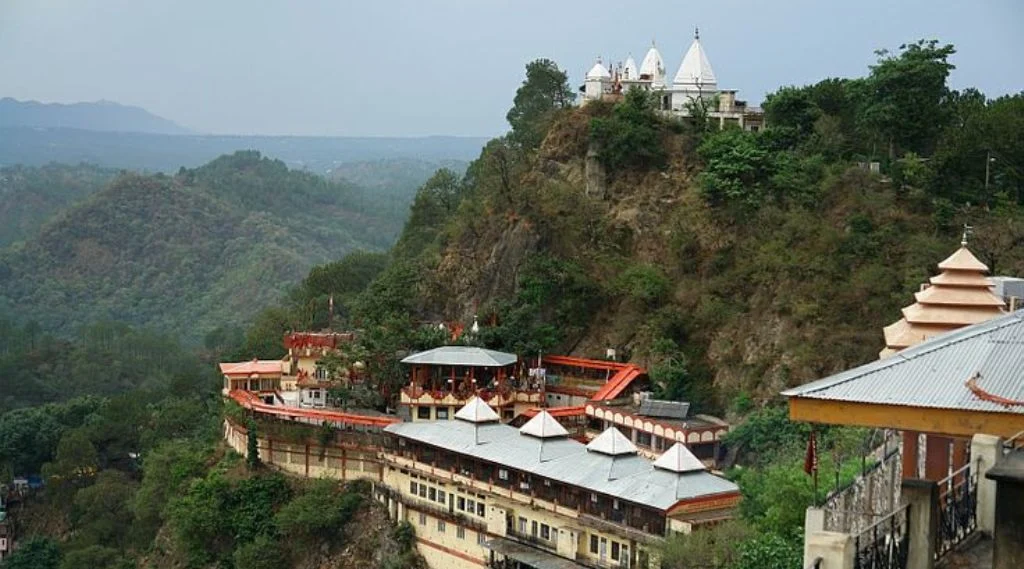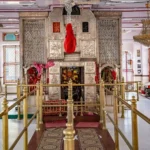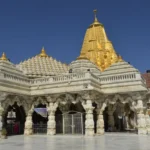Located in the serene hills in Bilaspur district of Himachal Pradesh, the Naina Devi Temple isn’t just a religious site—it’s a spiritual experience that pulls pilgrims and travelers into a world of myth, devotion, and panoramic beauty. Whether you’re a spiritual seeker or an offbeat explorer, Naina Devi Temple offers something unforgettable.
Mythology Behind Naina Devi Temple
According to the Hindu Puranas, Sati, the daughter of Prajapati Daksha, married Shiva against her father’s wishes. Daksha performed a grand yajna (sacrifice) but did not invite Sati or Shiva. Even so, Sati went to the yajna, where Daksha ignored her and insulted Shiva. Unable to bear the insult, Sati offered herself into the fire. Filled with grief, Shiva wandered the universe carrying her half-burnt body. At last, Vishnu used his Sudarshan Chakra to cut her body into 51 parts, which fell on different places across the earth. Each of these places became a Shakti Peeth.
The name “Naina” comes from the Sanskrit word for “eyes.” According to Hindu mythology, the temple marks the spot where the eyes of Goddess Sati fell when Lord Vishnu dismembered her body to end Shiva’s rage. This is why the temple is considered one of the 51 Shakti Peethas, sacred shrines where parts of the goddess’s body fell.
You may also explore four Adi Shaktipeethas: Vimala, Tara Tarini, Kamakhya and Kalighat.
Mahishasura and the Battle of Good Over Evil
Another powerful legend associated with the temple is that of Mahishasura, the demon king who had a boon that no man could kill him. With pride and cruelty, he terrorized the heavens and the earth. The gods, helpless against his tyranny, appealed to Maa Durga for help.
It is said that Devi Naina, a fierce incarnation of the Goddess, appeared on this very hill and waged a mighty war against Mahishasura. Mounted on her lion and armed with divine weapons, she vanquished the demon, restoring peace to the world.
Thus, the temple doesn’t just symbolize maternal compassion—it also represents Shakti, the divine feminine force that protects dharma and annihilates evil.
A Glimpse into History
While the temple’s mythology connects it to the fall of Sati’s eyes, historical evidence reveals that its veneration and construction evolved over time through royal patronage, folk belief, and political relevance.
Early Mentions and Folk Worship
Records suggest that local tribal communities worshipped the site as a Shakti sthala long before any structured temple existed. According to oral traditions and temple manuscripts, a humble shrine stood here as early as the 8th–9th century CE, possibly maintained by local shepherd tribes and early hill settlers who worshipped the feminine divine under different names.
Over time, the cult of Shakti in the region grew strong, and the site gained spiritual significance for its association with the Nayan (eyes) of Sati, solidifying its identity as a Shakti Peetha. Pilgrims from nearby regions began to visit the site seasonally, especially during Navratri.
Royal Patronage under the Kings of Bilaspur
The first structured temple complex likely took form under the rulers of the erstwhile princely state of Bilaspur. In the 11th to 13th centuries, historical inscriptions indicate that the Chandel Rajputs, who ruled parts of present-day Himachal Pradesh, patronized local temples and promoted the Shakti cult.
A copper plate inscription of 13th century recovered from the area mentions offerings made by a Chandel noble to “Naineshwari Devi,” a clear reference to Naina Devi.
Sikh and Mughal Period Influence
During the Mughal period, temple destruction was frequent in North India, but due to its remote hill location, Naina Devi luckily escaped it.
Later, during the 18th century, when Guru Gobind Singh moved through the area en route to Anandpur Sahib, records mention his brief halt near the shrine, where local Sikhs offered their respects to the Devi.
In fact, the temple holds shared reverence among Hindus and Sikhs, a rarity in religious sites. This dual faith bond helped preserve the temple even during times of political and religious unrest.
Rebuilding in the 20th Century
The temple was rebuilt in the early 20th century by local patrons and the temple trust, with funding support from the erstwhile royal family of Bilaspur.
Since 1948, after the merger of princely states into the Indian Union, the Himachal Pradesh government has officially supervised the management of the temple through a formal temple trust, which maintains records of donations, footfall, and rituals. The trust also documents regular pilgrimages and the significant increase in footfall during the Chaitra and Ashwin Navratri festivals.
Modern Recognition and Pilgrimage Records
In official tourism records from the 1980s onward, Naina Devi Temple consistently appears among the top religious destinations of Himachal Pradesh. Government archives and ASI reports acknowledge it as a historically significant religious site with strong socio-cultural impact on the region.
Today, the temple is connected by motor roads, ropeways, and GSRTC buses, bringing in lakhs of pilgrims annually. Its annual fairs, especially during Shravan Ashtami, are recorded in district administrative reports, reflecting both economic and religious importance.
Architecture: Where Simplicity Meets Sanctity
The Naina Devi Temple in Himachal Pradesh showcases traditional North Indian and Himalayan architecture. Builders used stone and wood to suit the local climate, giving the temple its distinct pyramidal or conical roofs.
The complex is beautifully decorated with marble, and stone lion statues guard the main entrance that leads to the sanctum housing the idol of Goddess Naina Devi. Colorful bells and sacred threads tied by devotees give the temple a vibrant yet sacred look.
The temple’s first gate is built in the Shikhar style, and its entrance doors are covered with silver plates decorated with intricate carvings. Inside the temple premises, beautiful idols of various gods and goddesses are respectfully installed.
Where Is Naina Devi Temple Located?
Perched at an altitude of 3,520 feet above sea level, Naina Devi Temple is located in the Bilaspur district of Himachal Pradesh, close to the Punjab border. It overlooks the scenic Gobind Sagar Lake, which adds to its ethereal charm.
The temple is also near the famous Anandpur Sahib and lies about 100 kilometers from Chandigarh, making it a convenient detour for pilgrims and tourists alike.
How to Reach Naina Devi Temple
Reaching Naina Devi Temple is both accessible and scenic. Here are your options:
- By Air: The nearest airport is Chandigarh Airport, approximately 100 km away.
- By Train: The closest railhead is Anandpur Sahib, just 30 km from the temple.
- By Road: Buses and taxis run frequently from Chandigarh, Bilaspur, and Anandpur Sahib.
- Ropeway: A ropeway offers a thrilling ride up the hill, ideal for those who want to skip the steep climb.
Where to Stay Near Naina Devi Temple
There are several accommodation options ranging from budget dharamshalas to mid-range hotels.
Hotel Temple View
• Distance: 0.2 km from the temple
• Price Range: ₹800–₹1,200
• Highlights: Budget-friendly and extremely close to the temple
Hotel Hilltop
• Distance: 1 km from the temple
• Price Range: ₹1,500–₹2,500
• Highlights: Mid-range comfort with scenic hillside views
Himachal Tourism Lodge
• Distance: 1.5 km from the temple
• Price Range: ₹1,200–₹2,000
• Highlights: Government-run, clean, and reliable for families
Book early during Navratri or summer holidays to avoid last-minute hassles.
Best Time to Visit Naina Devi Temple
- Summer (April to June): Pleasant weather, ideal for family trips.
- Monsoon (July to September): Lush greenery but slippery paths; avoid if you’re uncomfortable with rains.
- Autumn/Winter (October to February): Cold but peaceful; snowfall enhances the experience for winter lovers.
Navratri is the most vibrant time, with the temple lit up and thousands of devotees visiting from across the country.
Major Festivals Celebrated
- Navratri: Held twice a year, during Chaitra (March-April) and Ashwin (September-October), this festival brings nine days of celebration, devotion, and cultural programs. The temple transforms into a vibrant fairground, adorned with flowers, colourful lights, and elaborate décor—often arranged by community groups from Punjab and Haryana. During the Navratri of March–April 2025, over 3.20 lakh devotees visited the Naina Devi temple—part of 18.85 lakh pilgrims across Himachal’s Shakti Peethas
- Shravan Ashtami Mela: Held in July-August, this eight-day fair attracts lakhs of devotees. The fair often runs for about 10 days, culminating on the Ashtami (8th lunar day). For instance, recent editions ran from August 5 to 14. In 2025, the mela was reported to start around July 25 and conclude by August 5, aligning with Shravan Ashtami
Devotees chant, dance, and offer prasad during these festivals, turning the temple into a vibrant hub of faith and celebration.
People & Culture Around Naina Devi
Locals around Naina Devi Temple are primarily Pahari and Punjabi communities. Known for their hospitality, they often offer free guidance to visitors. Small stalls run by local women sell handmade woollens and regional snacks like sidu and babru.
Folk songs, vibrant attire, and temple stories handed down generations give the area its unique cultural identity.
Nearby Attractions to Explore
Make the most of your trip by exploring these nearby gems.
Gobind Sagar Lake:
A man-made reservoir located in the Una and Bilaspur districts of Himachal Pradesh, formed by the construction of the Bhakra Dam between 1955 and 1962. Perfect for boating and photography.
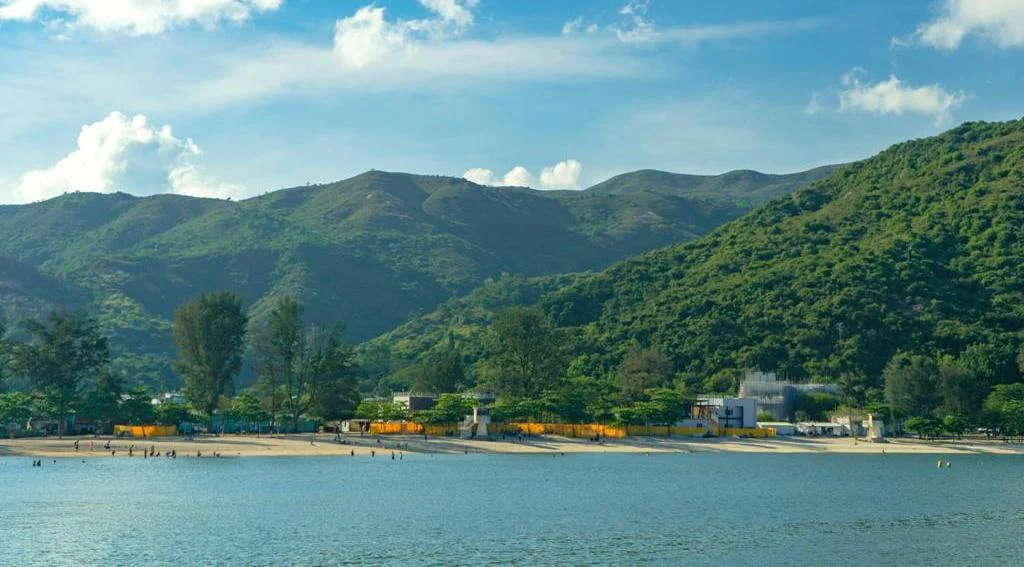
It was named in honor of Guru Gobind Singh, the tenth Sikh Guru. The lake stretches approximately 90 km in length and covers an area of about 170 km², making it one of India’s largest reservoirs.
Bhakra Nangal Dam:
An engineering marvel located about 40 km away. This is a concrete gravity dam built on the Sutlej River near Bhakra village in Bilaspur district, Himachal Pradesh, while Nangal Dam lies downstream in Punjab.
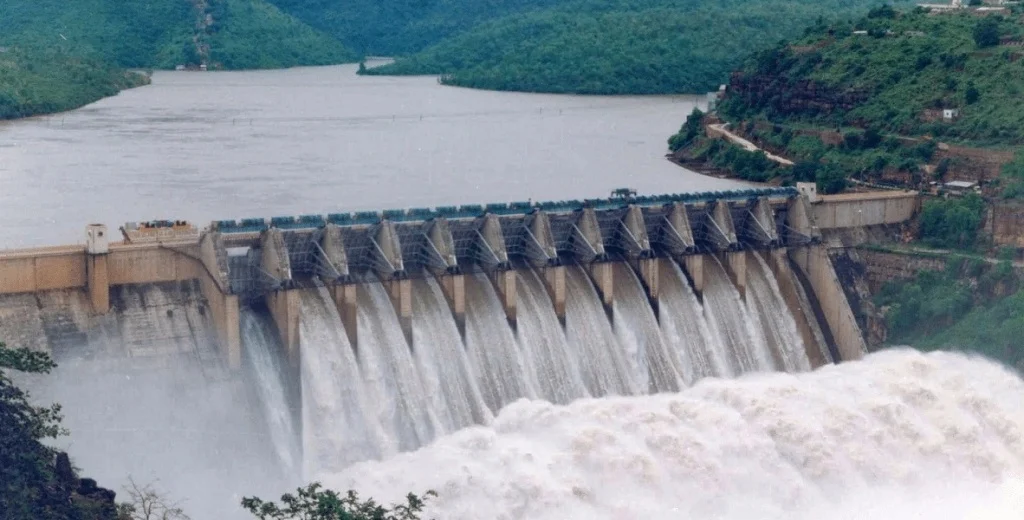
Collectively, they are often referred to as the Bhakra‑Nangal Dam project. The dam stands approximately 226 m (741 ft) tall and stretches 518 m (1,700 ft) long, making it the highest straight-gravity dam in India and the second tallest in Asia.
Anandpur Sahib:
One of the five Takhts of Sikhism, 30 km from the temple. Founded in 1665 as Chakk Nanaki by Guru Tegh Bahadur, the city grew under his son Guru Gobind Singh, who renamed it Anandpur Sahib and made it a center of Sikh spirituality.
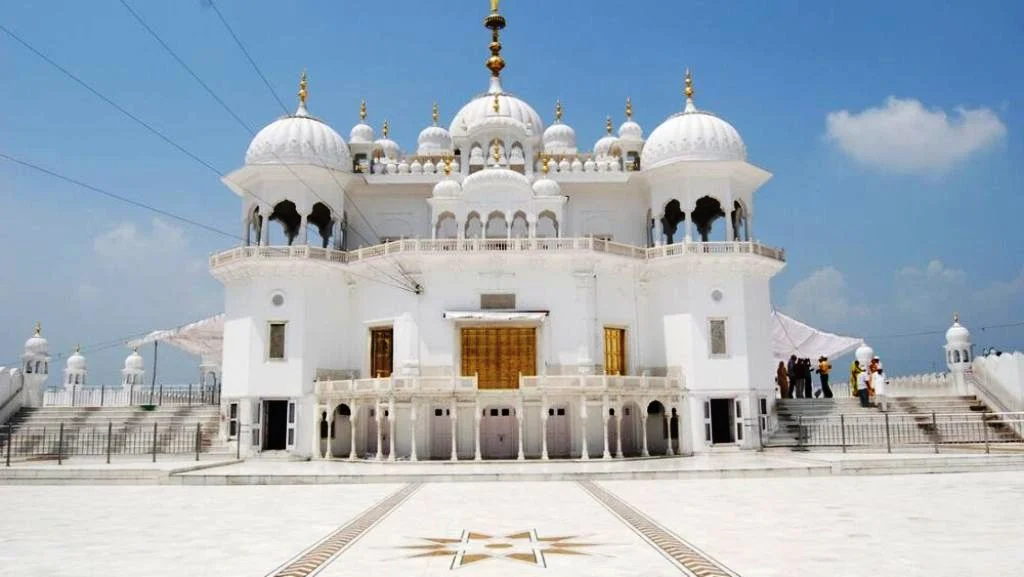
On Vaisakhi, 1699, Guru Gobind Singh initiated the Khalsa Panth, baptized the Panj Pyare, and formally established the Khalsa congregation here—an event central to Sikh identity.
Final Thoughts
A visit to the Naina Devi Temple isn’t just about ticking off a religious destination—it’s about experiencing devotion in its rawest form, culture in its most vibrant expression, and nature at its most sublime.
Whether you’re seeking blessings, history, or tranquility, this hilltop temple offers it all in abundance.
FAQs:
It’s about 100 km from Chandigarh.
The temple is open daily from 6 AM to 10 PM, and entry is free.
Nanda Ashtami Mela is 8‑day long fair culminating in immersion ceremony in August–September every year.
There are approximately 300 stairs from the bus stand to the temple.
The price of a one-way trolley ticket for adults at Naina Devi is Rs.130, and for children, it’s Rs.60. A two-way ticket for adults is Rs.190, and for children, it’s Rs.90.

